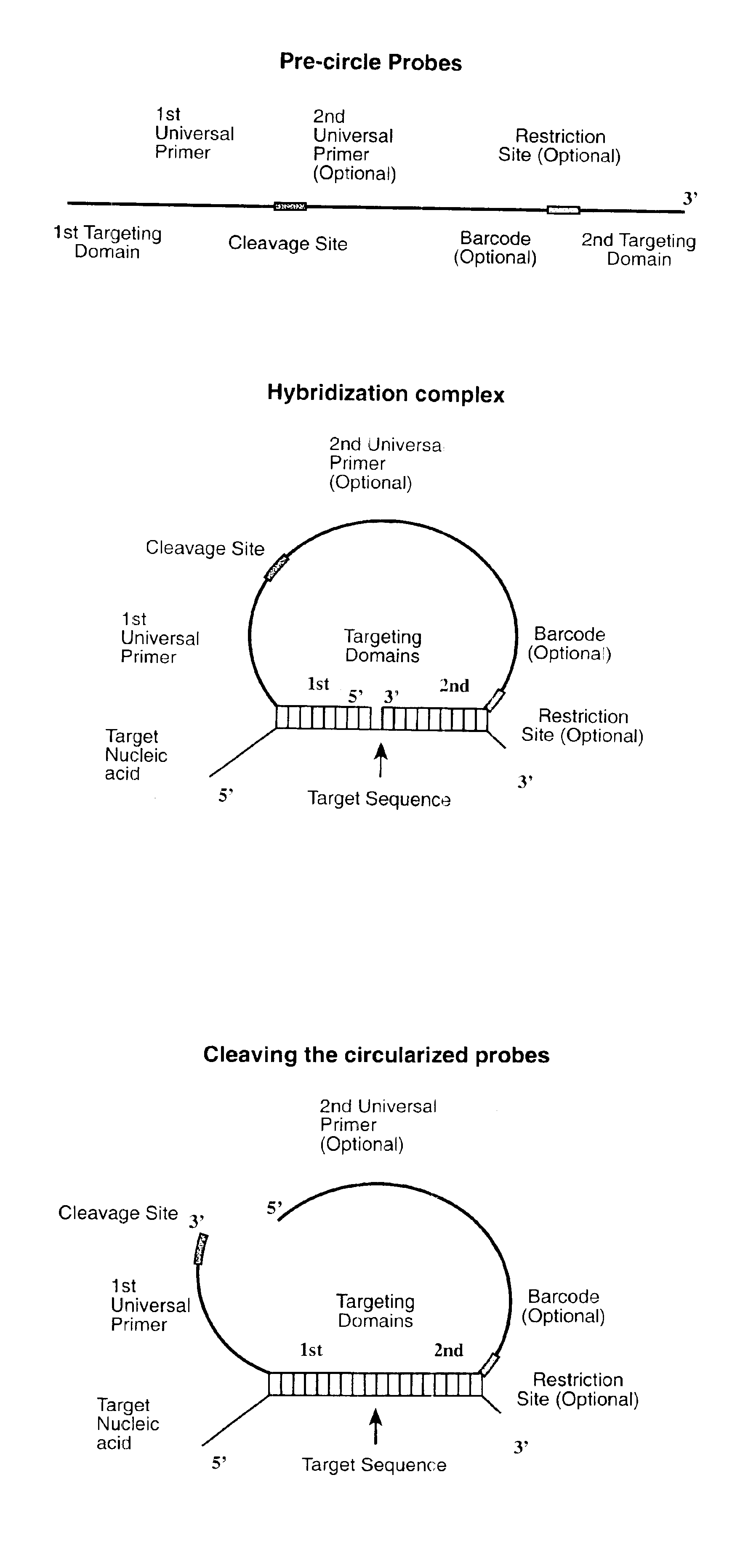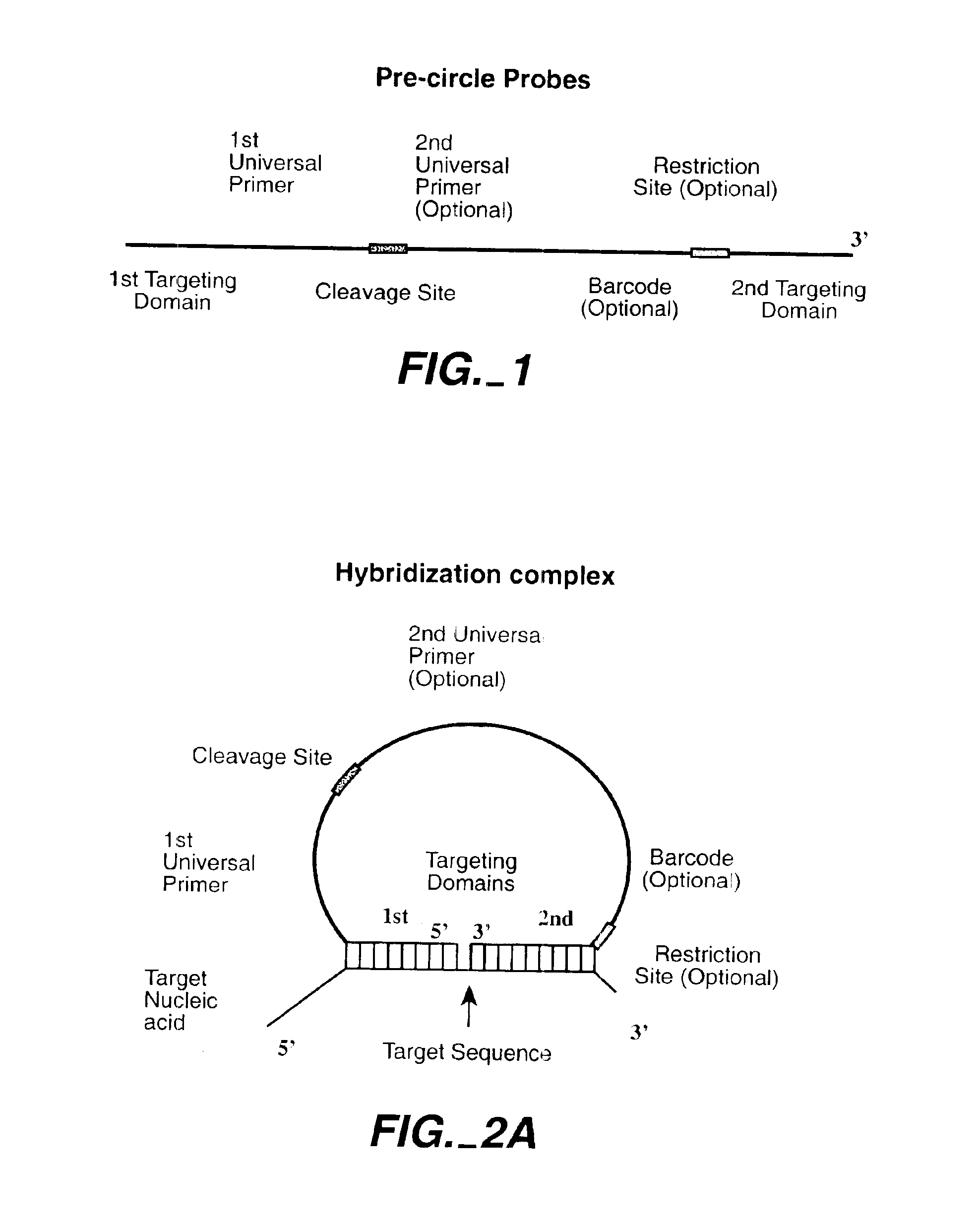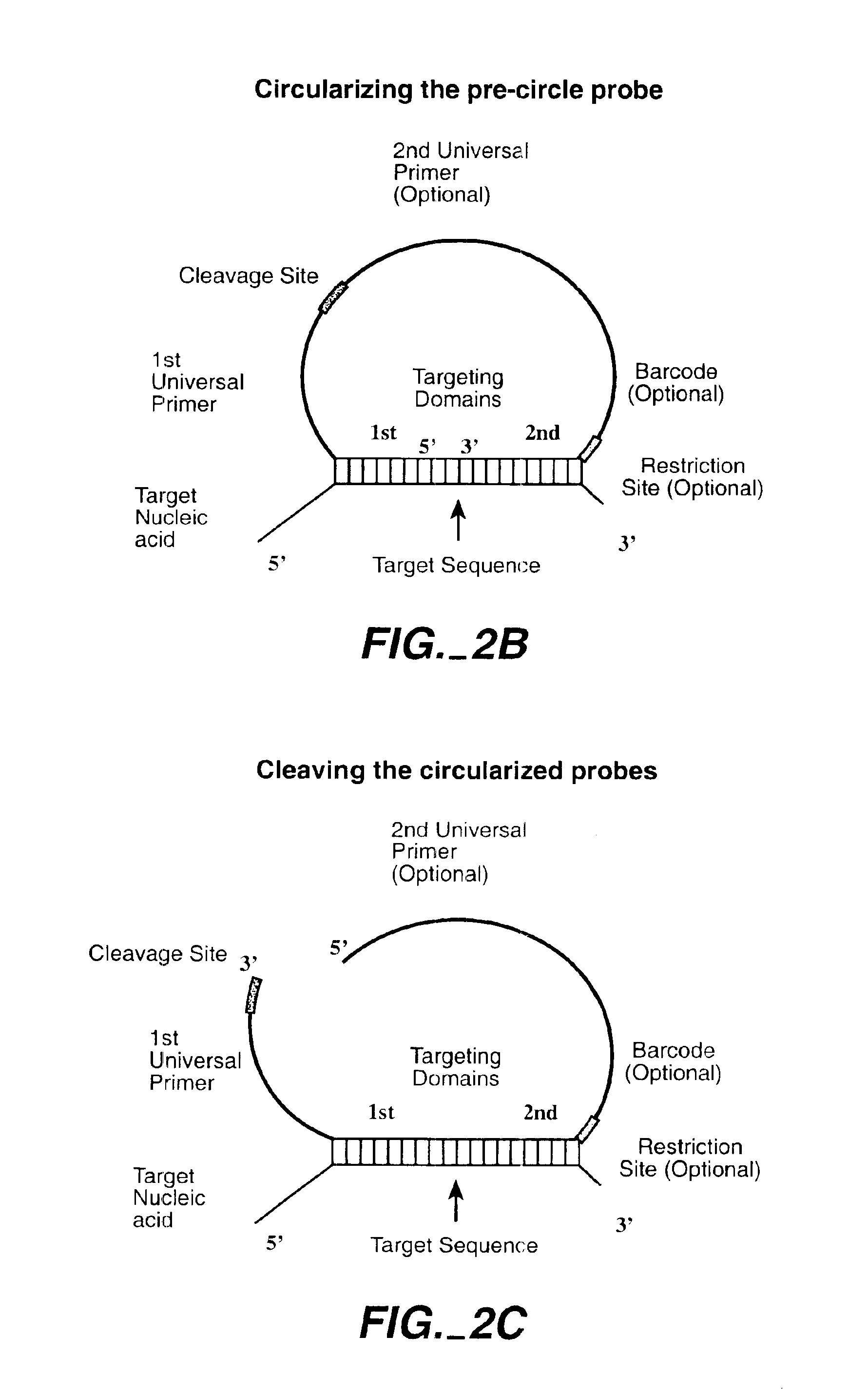Direct multiplex characterization of genomic DNA
a technology of dna and genomics, applied in the field of nucleic acid multiplexing nucleic acid reactions, can solve the problems of severe toxicity or therapeutic failure, defective or variant protein expression, and significant increase in the number of target molecules
- Summary
- Abstract
- Description
- Claims
- Application Information
AI Technical Summary
Benefits of technology
Problems solved by technology
Method used
Image
Examples
example 1
Distinction of Two Templates Differing by a Single Nucleotide
[0319]This example demonstrates that it is possible to distinguish two nucleic acids which differ by a single nucleotide by a method in which an oligonucleotide probe is hybridized to the nucleic acid prior to PCR amplification.
[0320]Eight reactions were conducted in parallel in which one of two template DNAs, differing from each other by a single nucleotide (referred to herein as “SNP”), were incubated with or without one of two oligonucleotide probes. The different combinations are set forth in Table 1. The template DNA S7 is 600 bp long double stranded DNA amplified from S. cerevisiae strain S288C, which includes the nucleotide sequence 5′ ATCTCGGGATATCAGACTTAGCGGCACCGTCCTCACCG 3′ (SEQ ID NO:1): 1 and template DNA Y7 is 600 bp long double stranded DNA from S. cerevisiae strain YJM789, which includes the nucleotide sequence 5′ ATCTCGGGATATCAGACTTAGCGGTACCGTCCTCACCG 3′ (SEQ ID NO:2). The two template DNAs are identical ex...
example 2
Identification of a SNP by “Gap Filling”
[0324]This example describes a method for determining the identity of a nucleotide, e.g., a SNP, comprising adding an oligonucleotide probe in four reactions containing a polymerase, a ligase, and one of the four nucleotides.
[0325]Four different SNPs were tested in singleplex reactions. Sixteen reactions were conducted in parallel, in which each of four DNA templates were incubated with one of four probes. In this example, the template DNAs were from 36 to 42 base oligonucleotides from S. cerevisiae. The different combinations are set forth in Table 2. The nucleotide sequences of the templates and probes are as follows (the structure of the probes is indicated as: homology 1 / primer 1 / primer 2 / barcode / (+ / −DraI) / homology 2):[0326]Template DNA Y1:TOS:T:[0327]5′ ACATTTAGATCTGCAGTTTCTAATATGAATTCAGTGGAAAAT 3′ (SEQ ID NO:7);[0328]Template DNA Y2:TO S:C:[0329]5′ TCGGGATATCAGACTTAGCGGCACCGTCCTCACCGT 3′ (SEQ ID NO:8);[0330]Template DNA Y3:TO S:A:[0331]5...
example 3
Background Suppression by Capture of the Run-Off Products Using Biotin-Streptavidin
[0347]This experiment is a demonstration of a biotin capture cleanup method used to suppress background that arises from elongation events that are primed by unligated oligo probe during PCR amplification. A biotinylated primer is used to make a first copy of the ligated probe. This copy is captured with streptavidin coated magnetic beads while all other molecules are washed away. The captured copy is then amplified in a PCR reaction.
[0348]The template DNAs and probes were identical to those used in Example 1: The two template DNAs used were the 600 bp amplicons designated S7 and Y7, comprising (SEQ ID NOS:1 and 2), respectively, which differ from each other in a single nucleotide; and the two probes S and Y, having (SEQ ID NOS:3 and 4), respectively.
[0349]The different combinations of template and probes are set forth in Table 3.
TABLE 3Components of the reaction mixturesReaction12345678ProbeSS allele...
PUM
| Property | Measurement | Unit |
|---|---|---|
| temperature | aaaaa | aaaaa |
| Tm | aaaaa | aaaaa |
| Tm | aaaaa | aaaaa |
Abstract
Description
Claims
Application Information
 Login to View More
Login to View More - R&D
- Intellectual Property
- Life Sciences
- Materials
- Tech Scout
- Unparalleled Data Quality
- Higher Quality Content
- 60% Fewer Hallucinations
Browse by: Latest US Patents, China's latest patents, Technical Efficacy Thesaurus, Application Domain, Technology Topic, Popular Technical Reports.
© 2025 PatSnap. All rights reserved.Legal|Privacy policy|Modern Slavery Act Transparency Statement|Sitemap|About US| Contact US: help@patsnap.com



